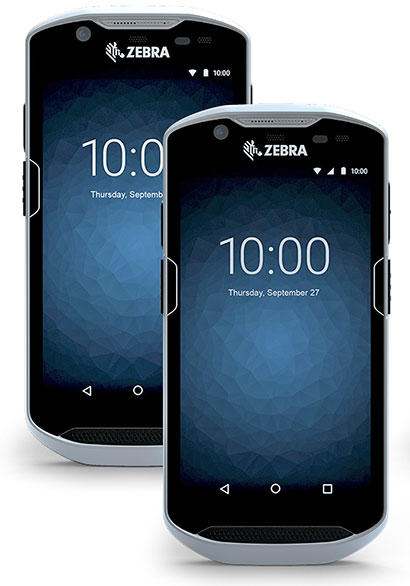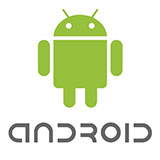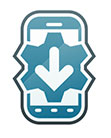|
Zebra TC52/TC57 Touch Computer
Evolving Android-based enterprise mobile touch computing is hitting its stride
(by Conrad H. Blickenstorfer)
Share on:




On September 27, 2018, Zebra Technologies introduced substantial upgrades to its two-year-old TC5 Series of "mobile touch computers." These are devices that in the guise of the ubiquitous and immensely popular smartphone form factor bring ruggedness, dependability and superior security to business and enterprise customers. A tough job and a tough nut to crack? Yes, but over the past five years Zebra has shipped over a million of their various touch computers, a respectable number for dedicated vertical market devices.

So what does the new TC52/TC57 bring over the original TC5 Series? It still looks like a beefed-up modern smartphone, with a footprint just a tad smaller than that of the iPhone 8 Plus. With, of course, a capacitive multi-touch screen that still measures 5 inches diagonally — placing it between the iPhone 8 and 8 Plus — and still offers 1280 x 720 pixel resolution.
There is now a more powerful 2.2GHz Snapdragon 660 octa-core processor that should be both faster in every respect and, thanks to 14 vs 28 nm process technology, more power-efficient to boot. There's a new graphic processor, and LTE data performance should be way up (TC57 model only). The 13 megapixel camera should be quicker, too, in focussing and shutter lag, and it has a brighter f/2.2 lens. And there's now a 5mp front cam as well. That makes for even more attractive handheld computing and communication hardware than it was before, and that's even before we get into all the extras Zebra continues to bake into their rugged handhelds to make them tools for the job and not just tougher smartphones.

Android's increasing maturity
Zebra has plenty of Android expertise stemming from its acquisition of Motorola Solutions' enterprise division which, itself, had its roots in the former Symbol Technologies that Motorola acquired in 2007. In essence, there's Android expertise with a lineage that goes back to the original Droid phone release almost a decade ago.
 Given the commanding position it has in consumer smartphones today, it's hard to remember that it took Android a while to establish itself. Acceptance took even longer in enterprise and industrial markets that kept waiting for Microsoft to finally replace the moribund Windows Mobile (it didn't).
Given the commanding position it has in consumer smartphones today, it's hard to remember that it took Android a while to establish itself. Acceptance took even longer in enterprise and industrial markets that kept waiting for Microsoft to finally replace the moribund Windows Mobile (it didn't).
Much to its credit, Motorola Solutions saw the handwriting on the wall when it made three of its popular enterprise mobile computers available with Android back in October, 2013. Initially still compromises and not yet truly Android optimized, with each successive product, Zebra improved and refined the use of Android in enterprise handheld computers, resulting in its current leadership position.
Making Android better for the enterprise
As a relatively new operating platform that was initially designed exclusively for consumer phones, Android is not a natural to meet enterprise requirements. There was (and is) version fragmentation, Google's haphazard upgrade support, marginal security, and for software downloads reliance on the "Google Play" store, which is nowhere near as structured and supervised as Apple's app store.
That meant that providers of enterprise-oriented Android solutions were on their own to come up with features, utilities and functionality more suitable for the enterprise. Zebra initially addressed that by creating a layer of "Android Mx" extensions to add enterprise-class security, manageability, data capture and wireless connectivity. That appears to now have morphed into Zebra's "Mobility DNA" (see Mobility DNA brochure here). To be honest, it's quite a monumental task to patch Google's ever-changing phone OS into something enterprises feel comfortable with, but Zebra's certainly putting forth an increasingly complete effort.
Google itself is quite aware of the issue. A while ago, the company launched Android for Work, which was designed to provide enterprise features for Android users. More recently, Google created the Android Enterprise Recommended (AER) program that independently validates enterprise-class solutions (Zebra participates in that).
Extensions and programs, however, can't address another inherent Android issue. Android is a consumer platform with easy, unlimited access to entertainment and apps. That is not necessarily a good thing in business where devices are used for work and the last thing they should do is invite and facilitate distraction.
One way to address this issue is using Google's AOSP (Android Open Source Project). It is the open source Android engine and does not include Google's proprietary and most popular apps, which Google calls GMS, Google Mobile Services. So no Google Chrome, You Tube, GMail, Maps, Photos or even the Play Store. That is a bit drastic, especially given the argument that everyone already knows Android and so there's no learning curve to use it in the enterprise. Without all those apps, there is a learning curve.

In the past, Zebra addressed this issue by shipping devices with Android AOSP, but also offering "full" Android with all the GMS apps. Zebra's new solution is "GMS Restricted Mode." It allows IT administrators to customize access to the Google Mobile Services apps via Zebra's StageNow app. That's a great idea and will allow enterprise customers to decide what they will and will not make available on their devices.
Another worthwhile Zebra innovation is LifeGuard for Android, designed to extend the lifecycle of Zebra's Android-based handhelds to the enterprise-customary 5+ years via aggressive security patches and updates. LifeGuard, which is part of Zebra's OneCare contract, also includes a dashboard that shows how and when devices across the enterprise were updated.
The hardware
To recap and flesh out the hardware aspects of the Zebra TC52/TC57, the device has roughly the same footprint as an iPhone 8 Plus (6.1 x 2.9 inches), but ruggedness, components and replaceable battery make it thicker (0.73 inches) and heavier (8.8 ounces) than a consumer phone. There's the speedy 2.2GHz octa-core processor. For storage there are 4GB of RAM and 32 GB of Flash. That's augmentable via MicroSD slot up to 256GB of SDXC card storage.
WiFi is of the dual-band, speedy 802.11a/b/g/n/ac variety that also includes 802.11d/h/i/r/k/v/w, those handling global roaming, interference elimination, enhanced security, fast roaming, optimized network performance, power savings, and client/infrastructure protection, respectively. There's also long-range (800 ft) Bluetooth v5.0 BLE, and NFC. Industrial-grade scanning comes via an integrated Zebra SE4710 1D/2D imager (see SE4710 spec sheet). The rechargeable Li-Ion battery packs a generous 16 watt-hours and is good for 14 hours on a charge.
The TC57 model includes A-GPS and 4G LTE as well 2G/3G voice/data support in both global and Americas versions.
Since many prospective TC52/TC57 customers will use their devices for voice communication in noisy areas, there's not only standard phone functionality (TC57), but also push-to-talk, three microphones, a strong speaker, and noise cancellation. Finally, a pressure sensor seems to have been added for even more potential application functionality.
Built to last
While the enterprise deployments Zebra has in mind with the TC52/TC57 aren't generally environmentally harsh working environments, the company made sure the devices are easily capable of handling most adverse situations they may encounter.
TC52/TC57 handhelds can survive four-foot drops to concrete (6-foot with optional rugged boot) and they were subjected to 500 half-meter tumbles in tests. The -10 to 122 degree Fahrenheit operating temperature range is now wide enough for all intended applications, now including commercial freezers. There is also vibration resistance testing data. Sealing has improved from IP65 in the predecessor models to IP67, which means the devices can survive full immersion.
Zebra TC52/TC57 Series: Enterprise Android devices evolved
With the TC52 and the mobile broadband-equipped but otherwise largely identical TC57, Zebra has launched an intelligent upgrade to its well-received TC5X Series of rugged enterprise handhelds. It's an upgrade that not only enhances hardware performance, communication and performance, but also addresses OS software with the latest version of Android, and an expanded array of workforce productivity, security, management and connectivity enhancements. And, of course, the devices seamlessly fit into Zebra's vast array of mobile printing and logistics solutions. -- Conrad H. Blickenstorfer, September 2018
|



